第52章 CHAPTER X THE GREY FLESH FLIES(3)
That a grub destined to live in the darkness, under the shelter of a corpse, should avoid the light is only natural; the strange part is its very perception. The maggot is blind. Its pointed fore part, which we hesitate to call a head, bears absolutely no trace of any optical apparatus; and the same with every other part of the body. There is nothing but one bare, smooth, white skin. And this sightless creature, deprived of any special nervous points served by ocular power, is extremely sensitive to the light. Its whole skin is a sort of retina, incapable of seeing, of course, but able, at any rate, to distinguish between light and darkness. Under the direct rays of a searching sun, the grub's distress could be easily explained. We ourselves; with our coarse skin, in comparison with that of the maggot, can distinguish between sunshine and shadow without the help of the eyes. But, in the present case, the problem becomes singularly complicated. The subjects of my experiment receive only the diffused light of the sky, entering my study through an open window; yet this tempered light frightens them out of their senses. They flee the painful apparition; they are bent upon escaping at all costs.
Now what do the fugitives feel? Are they physically hurt by the chemical radiations? Are they exasperated by other radiations, known or unknown? Light still keeps many a secret hidden from us and perhaps our optical science, by studying the maggot, might become the richer by some valuable information. I would gladly have gone farther into the question, had I possessed the necessary apparatus. But I have not, I never have had and of course I never shall have the resources which are so useful to the seeker. These are reserved for the clever people who care more for lucrative posts than for fair truths. Let us continue, however, within the measure which the poverty of my means permits.
When duly fattened, the grubs of the flesh flies go underground to transform themselves into pupae. The burial is intended, obviously, to give the worm the tranquillity necessary for the metamorphosis. Let us add that another object of the descent is to avoid the importunities of the light. The maggot isolates itself to the best of its power and withdraws from the garish day before contracting into a little keg. In ordinary conditions, with a loose soil, it goes hardly lower than a hand's breadth down, for provision has to be made for the difficulties of the return to the surface when the insect, now full grown, is impeded by its delicate fly wings. The grub, therefore, deems itself suitably isolated at a moderate depth. Sideways, the layer that shields it from the light is of indefinite thickness; upwards, it measures about four inches. Behind this screen reigns utter darkness, the buried one's delight. This is capital.
What would happen if, by an artifice, the sideward layer were nowhere thick enough to satisfy the grub? Now, this time, I have the wherewithal to solve the problem, in the shape of a big glass tube, open at both ends, about three feet long and less than an inch wide. I use it to blow the flame of hydrogen in the little chemistry lessons which I give my children.
I close one end with a cork and fill the tube with fine, dry, sifted sand. On the surface of this long column, suspended perpendicularly in a corner of my study, I install some twenty Sarcophaga grubs, feeding them with meat. A similar preparation is repeated in a wider jar, with a mouth as broad as one's hand. When they are big enough, the grubs in either apparatus will go down to the depth that suits them. There is no more to be done but to leave them to their own devices.
The worms at last bury themselves and harden into pupae. This is the moment to consult the two apparatus. The jar gives me the answer which I should have obtained in the open fields. Four inches down, or thereabouts, the worms have found a quiet lodging, protected above by the layer through which they have passed and on every side by the thickness of the vessel's contents. Satisfied with the site, they have stopped there.
It is a very different matter in the tube. The least buried of the pupae are half a yard down. Others are lower still; most of them even have reached the bottom of the tube and are touching the cork stopper, an insuperable barrier. These last, we can see, would have gone yet deeper if the apparatus had allowed them. Not one of the score of grubs has settled at the customary halting place; all have traveled farther down the column, until their strength gave way. In their anxious flight, they have dug deeper and ever deeper.